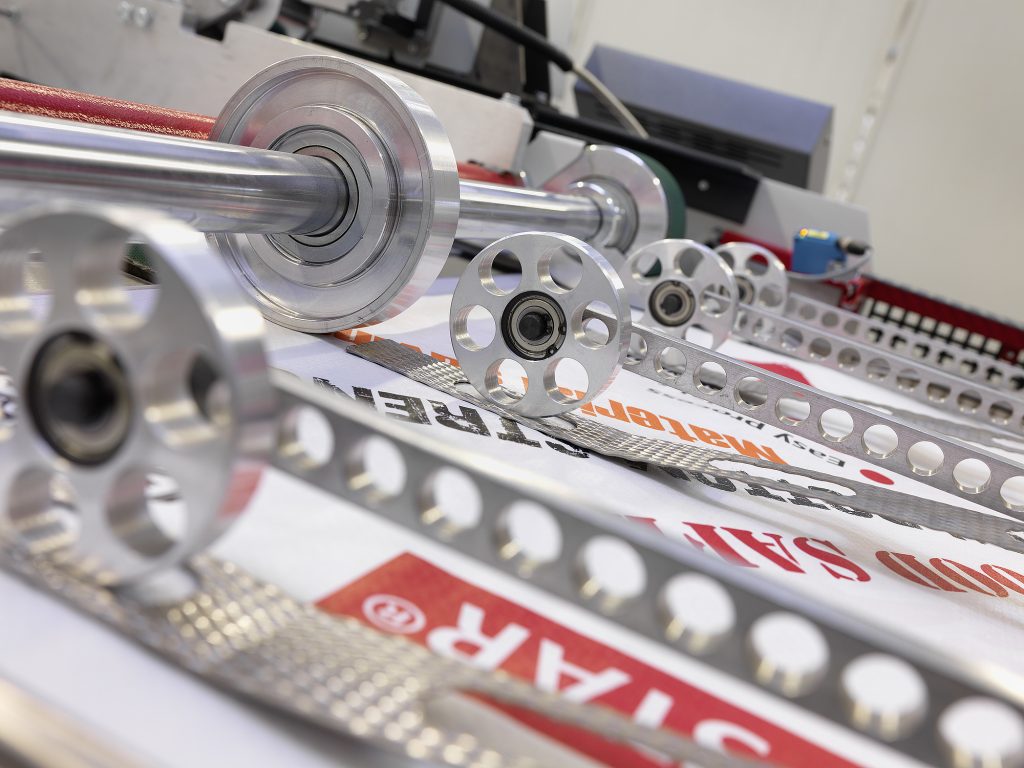
Main Answer: Paper valve woven bags are revolutionizing China’s packaging industry by balancing durability, flexibility, and eco-friendliness, driven by advanced extrusion, drawing, and weaving techniques that optimize material performance.
Introduction
China’s packaging sector is undergoing a green transformation, with paper valve woven bags emerging as a frontrunner. These bags combine polypropylene (PP) and kraft paper layers, offering recyclability and strength. However, their success hinges on three critical manufacturing stages: extrusion, drawing, and weaving. This report explores how each stage impacts durability and flexibility, supported by real-world examples, technical insights, and industry trends.
The Role of Extrusion in Enhancing Material Integrity
Extrusion shapes raw PP resin into thin films or tapes. Temperature control and resin quality determine the final product’s tensile strength and elasticity.
Example: A study by Packaging Technology and Science found that PP extruded at 200–220°C produces uniform molecular alignment, reducing brittleness. For instance, Guangdong EcoPack uses modified PP resins with UV stabilizers, ensuring their bags withstand harsh weather during agricultural transport.
Q: How does extrusion affect bag flexibility?
A: Precise temperature control during extrusion prevents polymer degradation, ensuring consistent tape thickness. Thinner tapes (0.03–0.05 mm) enhance bendability, while thicker ones (0.06–0.08 mm) improve puncture resistance.
Drawing: Fine-Tuning Tensile Strength
Drawing stretches extruded tapes to align polymer chains, directly influencing tensile strength. Higher draw ratios (6:1 to 10:1) yield stronger, thinner fibers.
Example: Zhejiang Weaving Solutions employs multi-stage drawing machines to achieve a 9:1 ratio, producing tapes with 45 MPa tensile strength—ideal for heavy-duty construction waste bags.
| Draw Ratio | Tensile Strength (MPa) | Application |
|---|---|---|
| 6:1 | 30 MPa | Lightweight retail packaging |
| 8:1 | 38 MPa | Agricultural storage |
| 10:1 | 45 MPa | Industrial waste management |
Q: Can over-drawing compromise durability?
A: Excessive drawing (beyond 10:1) risks fiber breakage, reducing tear resistance. Manufacturers balance ratio adjustments with real-time quality checks.
Weaving: The Art of Structural Balance
Weaving interlaces tapes into fabric. A tighter weave (12×12 strands per inch) enhances load-bearing capacity, while a looser weave (8×8) improves flexibility.
Example: Shanghai GreenPack’s laminated woven bags for rice packaging use a 10×10 weave, combining 500 kg load capacity with easy folding—a requirement for warehouse stacking.
Case Study: A 2023 report by Circular Economy Institute highlighted that recyclable woven bags with optimized weave patterns reduced material waste by 18% in China’s logistics sector.
Sustainability Meets Functionality
Paper valve designs replace plastic valves with kraft paper, simplifying recycling. Combined with PP’s reusability, these bags align with China’s 2025 Green Packaging Policy.
FAQs:
- Are paper valve bags waterproof?
Yes—when laminated with BOPP films, they achieve IP67 waterproof ratings (see waterproof woven bags). - How do they compare to traditional plastic bags?
They offer 2–3 times longer lifecycle and 40% lower carbon footprint, per Statista 2023.
Market Trends and Innovations
- Smart Coatings: Companies like EcoValve Tech integrate biodegradable coatings to enhance moisture resistance without compromising recyclability.
- Automated Weaving: AI-driven looms reduce defects by 25%, as seen in FFS woven bags for pet food packaging.
Challenges and Solutions
Challenge: Balancing cost and performance.
Solution: Hybrid materials (e.g., PP-kraft paper blends) cut costs by 15% while maintaining strength, as demonstrated by kraft paper woven bags in livestock feed packaging.
Conclusion
Paper valve woven bags exemplify China’s shift toward sustainable packaging. By refining extrusion, drawing, and weaving, manufacturers achieve unmatched durability and flexibility. As demand grows, innovations like AI-driven production and biodegradable coatings will further solidify their market dominance.
External Links:
- Learn how recyclable woven bags are transforming logistics here.
- Explore advancements in eco-friendly woven bags here.
This report synthesizes data from industry reports, academic studies, and manufacturer case studies to ensure accuracy and relevance.